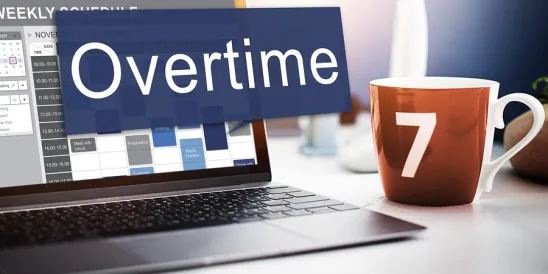Recently, the California Supreme Court issued its decision in Alvarado v. Dart Container Corporation of California. The Court’s decision changes the manner in which an employer must calculate overtime for employees who earn a flat sum bonus during a single pay period. Accordingly, based on the Court’s decision, this is yet another area where the rules in California differ from the federal rules. This decision is significant because it applies retroactively subject to the applicable statute of limitations.
By way of background, both state and federal laws require that amounts awarded as bonuses be included in determining a non-exempt employee’s overtime rate, except in the case of discretionary bonuses. This means that when the employee works overtime hours and receives a non-discretionary bonus, this bonus program will increase the non-exempt employee’s hourly rate for calculating overtime.
In Alvarado, the employer provided its employees a flat sum bonus in the form of an attendance bonus for those employees who were scheduled to work on a Saturday or Sunday, and did so, upon completing the full work shift. The primary issue in Alvarado was whether the “the divisor for purposes of calculating the per-hour value of the bonus should be (1) the number of hours the employee actually worked during the pay period, including overtime hours; (2) the number of nonovertime hours the employee worked during the pay period; or (3) the number of nonovertime hours that exist in the pay period, regardless of the number of hours the employee actually worked.”
The employer in Alvarado argued that it properly calculated the overtime rate based on federal regulations, i.e., option 1 — by dividing the employees regular wages plus bonuses by their total hours worked, including overtime hours, during the pay period. The Court concluded, however, that the divisor should be option 2, i.e., the number of nonovertime hours the employee worked during the pay period. As such, the Court ruled that to calculate the regular rate, the employer must divide the employees regular wages plus bonuses by their total regular hours worked, excluding overtime hours, during the pay period.[1]
The Alvarado Court limited its decision to flat sum bonuses comparable to the attendance bonus that the employer was providing its employees and explained that the employer’s weekend attendance bonus was “payable even if the employee work[ed] no overtime at all during the relevant pay period” because it was awarded just for showing up on the weekends. As such, other types of bonuses such as production bonus, a piecework bonus or a commission are not impacted by this decision. As the Court explained “[o]ther types of nonhourly compensation, such as a production or piecework bonus or a commission, may increase in size in rough proportion to the number of hours worked, including overtime hours, and therefore a different analysis may be warranted.”
In sum, employers who provide a flat sum bonus in California should review their calculations methods and make the necessary adjustments to the regular hourly rate calculation for purposes of calculating the overtime rate. Because the Alvarado decision applies retroactively, these employers should also review their past practices to minimize the risk of any future claims.
[1] The Court focused on the pay period as the basis for calculating regular rate of pay because the manner in which the parties in that case framed the issues. In a modified opinion, the Court explained that “it did not grant review to decide whether, under California law, regular rate of pay is properly calculated on a pay-period basis or a workweek basis, and nothing in this opinion should be interpreted as deciding that question.” See Court’s opinion at fn. 2




 />i
/>i

